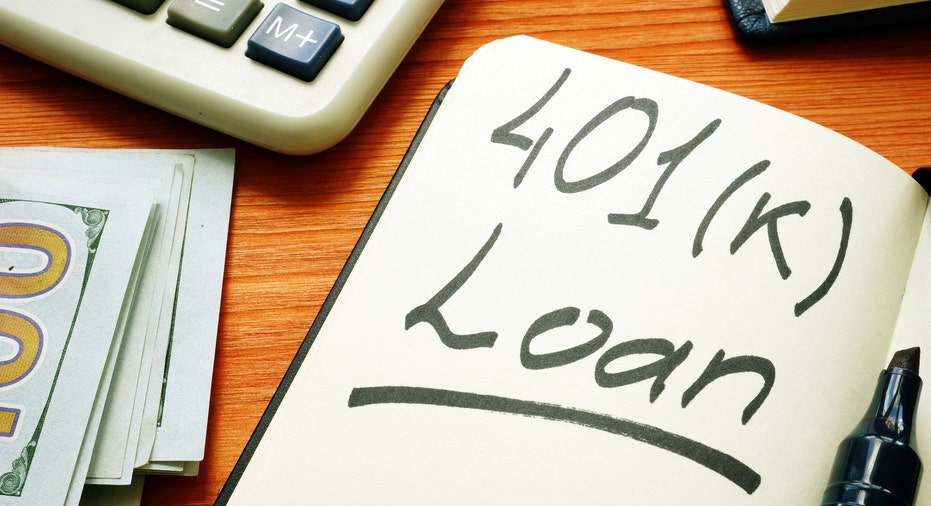Should I take a 401(k) loan during the coronavirus pandemic?

Just because you can take out a 401(k) loan doesn’t always mean you should. (iStock)
While the unemployment rate continues to improve, it remains higher than pre-pandemic numbers. In September 2020, the unemployment rate dropped to 7.9%, but it’s still 4.4 percentage points higher than the rate in February 2020. And a new Pew Research Center survey found that since the coronavirus outbreak started, one-in-four adults have had trouble paying their bills and a third have had to take money from their savings or retirement accounts to stay afloat.
If you have a 401(k), you may have considered tapping into it to get some relief from the current economic uncertainty. The Coronavirus Aid, Relief, and Economic Security (CARES) Act of March 2020 doubled the amount of money an employee could borrow from a 401(k) plan. Previously, participants could borrow 50% of their account balance, up to a maximum of $50,000. The CARES Act increased the maximum 401(k) loan to $100,000.
Depending on your retirement funds' balance, a 401(k) loan could give you access to a large amount of money. But is it a good idea? Here's what you need to know.
Is a 401(k) loan a good idea?
Borrowing from a 401(k) to pay off loans to get an infusion of cash has several drawbacks.
- It's risky
- There are potential fees
- The stock market may have impacted your balance
1. It's risky: Most 401(k) loans need to be repaid within five years. However, if you quit or are let go from your job, you must repay the loan within 30 to 90 days. If you cannot, the loan is considered a taxable withdrawal, and you’ll owe income taxes as well as an early withdrawal penalty if you’re younger than age 59 1/2. In today’s uncertain economy, your job may not be as secure as you’d like.
2. There are potential fees: Some plans also charge fees when you borrow from your 401(k), such as a one-time withdrawal fee, maintenance fee, or both. Fee structures can vary, so it's essential to review your plan’s rules before you borrow to understand all the potential charges.
3. The stock market may have impacted your balance: Another drawback is the stock market’s volatility during the pandemic may have impacted the value of your 401(k) balance. By drawing funds when the market is down, you could be taking a loss. Also, you won’t benefit if and when the market rebounds.
SHOULD YOU BORROW FROM YOUR 401(K) TO PAY OFF DEBT?
What to do instead of taking out a 401(k) loan
If you need access to funds, there may be better options that don’t come with the risks to your personal finances that 401(k) loans carry. Here are some alternatives:
- Take out a personal loan
- Take a debt consolidation loan
- Get a balance transfer credit card
- Refinance your mortgage or student loans
1. Take out a personal loan
Interest rates are near record lows, and personal loans can be an affordable way to borrow if you have a good to excellent credit score. It’s easy to compare banks and rates by visiting a site like Credible before you apply for a loan. You can explore personal loan options, including how much money you could qualify for based on your situation.
SHOULD YOU LOWER 401(K) CONTRIBUTIONS TO PAY OFF DEBT
2. Take a debt consolidation loan
If multiple debts are putting a strain on your monthly budget, consider getting a personal loan for debt consolidation. Combining your balances into one loan could lower the amount of money you pay each month as well as the overall interest you’ll pay during the term of your debt. Visit Credible to compare lenders and compare rates.
9 OF THE BEST DEBT CONSOLIDATION COMPANIES
3. Get a balance transfer credit card
If you are thinking of getting a 401(k) loan to pay off high-interest credit cards, a better option might be to transfer the balance onto a card that charges zero or low interest for a set period. By reducing the amount of money you're charged for interest, you can gain some traction and pay off your balances faster. By visiting a site like Credible, you can easily compare balance transfer card offers and find a card that fits your situation.
HOW TO GET A BALANCE TRANSFER CREDIT CARD
4. Refinance your mortgage or student loans
Another way to reduce your overall financial burden is to refinance a mortgage or student loan. Rates are at near-record lows, and if your current loan charges higher interest than what’s currently available, you could get immediate savings to your monthly budget by refinancing. A lower rate could potentially save thousands of dollars throughout the loan. Visit Credible to learn what kind of rate can get if you refinance your mortgage.
And get a sense of what your new monthly payment would be with Credible’s student loan refinancing calculator.
If you think it's time to refinance your mortgage, run the numbers and compare rates from multiple mortgage lenders via Credible. Having all the information, including lender fees and other costs, will help you decide whether a refinance will help you meet your financial goals.
The increased limits and ease of access might make the idea of getting a 401(k) loan enticing, especially if COVID-19 has impacted your finances, but it might not be your best long-term solution. Before you put your finances at risk by incurring the potential downsides that come with a 401(k) loan, explore your other personal finance options, so you make the best choice for your future.



















